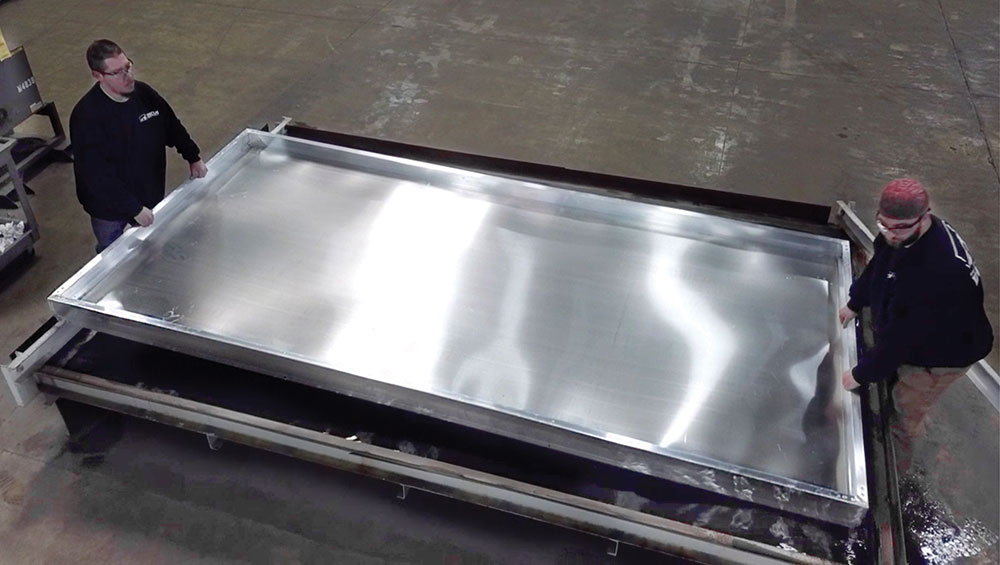The most tested IFR
Water tested in the shop
1) Every panel is tested to a 4″ water column in the shop. We secure the panels in a water tub, and then fill to 4″ water column. Every shop seam is inspected for leaks over a period of several minutes. Compressed air is also used to determine if any water is present.
Vacuum box tested in the shop
2) TIG welds and pickups are vacuum box tested in the shop to ensure that they are vapor-tight.
X-ray tested in the shop
3) Our shop has used x-ray testing welds as a triple check to the testing that each and every panel undergoes during fabrication.
Vacuum box tested in the field
4) 100% vacuum box testing of all shop and field welded seams in the field. Due to our signature open panel design, this can easily be accomplished from the top side of the deck. This ensures that every single deck seam is vapor-tight when we complete an installation.

There is nothing hidden inside a panel with the OpenRaft.™ Since our design is completely open on the top side, visual inspections quickly allow you to assess the integrity of the deck.
API calls for testing flotation compartments during installation.* With the DISCUS OpenRaft,™ testing can be easily accomplished topside. With honeycomb panels, the seams exposed to the liquid are not accessible from the top side and cannot be practically tested. We test 100% of our panels during every installation.
*API 650 Annex H.6.4 “Any flotation compartment that is completely shop-fabricated or assembled in such a manner as to permit leak testing at the fabricating shop shall be leak tested at the shop as well as retested in the field …”
Note: we think you will agree that retesting in the field means retesting after installation, not before, even if onsite. However, as with most sections of API, H.6.4 does not specify that field testing must logically follow erection, affording leeway to comply while avoiding actual, realistic, installed testing.